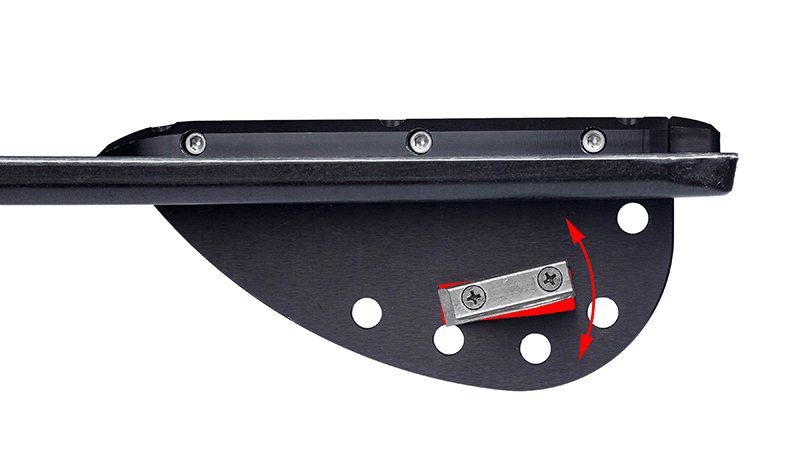Modern skis all come with wings, so why do so many good coaches suggest that novice skiers remove the wings from their skis? Here is some information that may help you decide what wing choice might be best for your skiing.
The adjustable wing is a clever component that can be used to fine-tune a broad range of ski behaviors. But most of this advanced ski-tuning is secondary to what the wing does best. More than anything else, the wing adds drag to the ski—especially from the edge-change out to the ball. The closest thing a ski has to a set of brakes is the wing. And if adding more drag to make skiing even more work makes no sense to you, this may be your first indication that you should try skiing wingless for a while.
Tournament skis, and their wings, are designed for shortline skiers. These fast powerful athletes can force any high-drag ski to accelerate explosively; but there’s very little they can do to force a ski to slow down in time for the turns. When a skier arrives at the ball with too much speed, the ski is riding high in the water. This makes the ski unstable and harder to turn consistently than if it were riding slower and deeper in the water. The wing’s drag helps these high-energy skiers shed more speed before each turn. The steeper the wing, the more deceleration it provides.
While adding more drag is a non-issue for a powerful shortline skier, it’s a big issue for novices. The toughest challenge facing most novices is generating enough speed just to make it out to buoy-width. For a novice skier, skiing with the wing on is like trying to accelerate a Smart Car with the emergency brake on.
But what about the fact that wings are an integral component in all tournament ski designs; won’t going wingless undermine the factory recommended setup? It turns out that removing the wing changes ski behavior in ways that promote the formation of good skiing habits—a double bonus for any novice. Not only will skiing wingless make it easier to get out to ball-width in a slalom course, it will also force the skier to get more over the front of the ski to make it turn properly—a critical habit to cultivate for future progress.
So at what point should a skier consider putting the wing back on their ski? This decision is slightly ski and skier dependent. If the ski is designed to ride low in the water (large bevels etc.), it will slow down well without a wing, so the wing can stay off into shorter line lengths. If the skier is a powerhouse behind the boat and using a fast ski, a wing may be needed earlier. Generally speaking, the kind of technique that will run 28 off (14.25 m) or 32 off (13 m) will usually be generating enough speed that the benefits of a wing will outweigh the handicaps. There are reputable skiers who believe we should all ski wingless into 38 off (11.25 m), but that’s probably a bit extreme with most of today’s fast skis.
In any case, if you are skiing at full line length or at reduced speeds, you should seriously consider removing the wing/brakes from your ski, or at the very least, reducing your wing’s angle for less drag. Wing angle adjustments are easy, and you can always go back.
If you don’t have wing angle gauges, you can download a FREE set of paper gauges at:
Paper Wing Gauges
If you have a 3D printer, you can download a FREE 3D model for wing gauges at:
3D Printable Wing Gauges
Skiing with less wing drag is a particularly good idea when free-skiing on big lakes. It’s less work so you can spend more time skiing and less time recuperating. And since it will also promote good skiing technique, wingless free-skiing is both beneficial and more fun.
Oh yeah, free-skiing on a public lake with no wing also means more speed in the turns … BIG spray =)
SkiJay
![]()

